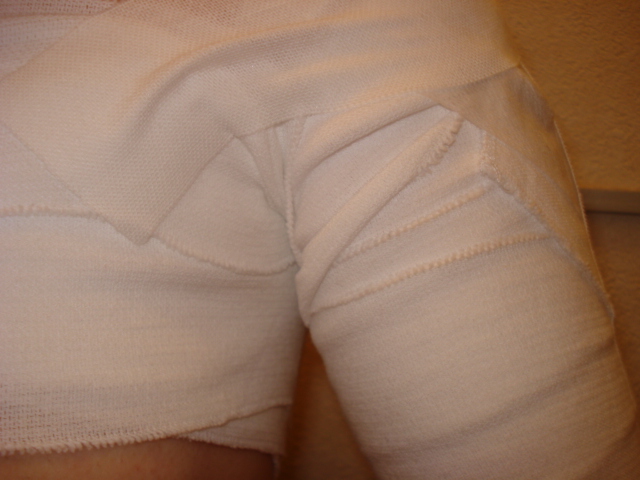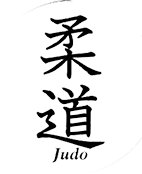OldeEnglishD wrote: Cichorei Kano wrote: OldeEnglishD wrote:Sad to report that the tensoplast tape did not adhere very well. It fell off within the first hour of class. I used the same taping pattern as with rock tape, and my skin was clean and dry when I applied it. The good news is the AC joint has been feeling better as of late, so hopefully with a little more time I will not need to worry about the extra support.
I cannot believe that. We used to train with tensoplast stuck on there for weeks, sometimes even using the same tensoplast four times. I have never in any judoka tensoplast coming off. We could not even get it off if we wanted. Getting it off could be a painful process and required considerable pulling force, sometimes we even had to cut it loose.
If what you say is true, I think you need to provide more information as to how you applied it. Can you provide us with a picture as to how you taped it ? You did tape this directly to the skin, correct ?
Taped directly to the skin. Here is a video from KT Tape showing the pattern I used. I used 5-6 inch strips. Tonight I am trying again without stretching the tape at all (last night it was slightly stretched).
http://www.kttape.com/instructions/ac-joint/
No, no, no, no, no, noooooooooooooooooooooooooooooo !!!
I just KNEW something had to be terribly wrong there. I ruptured my AC joint back in 1980 when my opponent during tsukinami shiai for my next dan-rank pulled out my jacket over my head and the ref instead of matte waited and I stopped fighting, took my hands off my opponent, and my opponent decided to still come in and throw me with seoi-otoshi right on my shoulder, the only time in my life I have fallen on my shoulder. The tensoplast was put on there and remained on their for 3 weeks permanently despite showers etc. The same for my many severe elbow injuries as well as the God knows how many times I applied them on others.
The second clue in your posts that something was terribly wrong was that you wrote "and my skin was clean and dry
when I applied it". It's impossible to tape an AC joint yourself !!
With the link you sent me everything is now crystal clear.
You can't tape an AC joint like that !! It's ridiculous. I've seen similar things from junior athletic trainers, no, no, no, no !! Completely unrealistic. C'mon think about it. What is the guy doing ? He is attaching 'strips' on the skin !! Your joint functions separately from your skin ! I can grab your skin firmly with my fingers, and your joint and muscles can still liberally move. Imagine how much weight and force the shoulder joint can produce and sustain, and you are going to control that by tape strips on the skin ?!! That's about the same as trying to stop a car from moving by putting strips of duct tape on the hood !!
Secondly, this is not a way to apply tensoplast !! Although obviously to put any tape on your body it will first attach on skin, but it is really attached on itself ! So, to apply tensoplast on an AC joint, you work with 1 roll from which you do not cut pieces. The tape is put AROUND your entire joint and part of your torso and upperarm starting at the beginning until enough tape is on there for stability and movement, and only then it is cut off.
We NEVER tape with "
strips". I know that this is common in North-America but there was not a hair on head that had this in mind when you were talking about taping. I obviously assumed "proper taping" instead of simply sticking strips to the skin.
I should have asked how you were taping or who was taping using what technique instead of assuming the person was proficient taping and would know how to use the tape. So, the answer to your problem is simple: completely wrong use of the tape + completely wrong technique.
I cannot explain in a post how to properly tape an AC joint if one does not know how to. This needs practical teaching, and you would not be able to do that on yourself anyhow. I cannot give you any advice on pursuing to achieve what is shown in the clip as that approach is something I completely reject as inadequate and nonmedical (disclaimer: I am providing advice on your personal question on taping a problem in judo, who used this clip to describe your approach; I have or had no intent to provide any judgment on the person's business of professional activities shown in the clip, and with whom I am not familiar, nor bear any grudge against). I tried to look on Youtube for clips of proper taping but could not find any by physicians or non-American clips. I think that much of the foundation of our taping approaches came from Germany. I remember, I think in Fall 1980 after the Olympics assisting the Russian team physician taping Khubuluri's shoulder who had a similar injury on his massive shoulder and had to go fight the fresh Olympic champion Van De Walle, and the Russians sure knew exactly how to tape, no 'strips' there either.
Maybe one should make the difference between "sports taping" as done by anyone and true "sports medical taping". We never made that difference because obviously we were not dealing with the "American strips sports taping" approach.
I could not immediately find proper full procedures expressed in pictures or in a clip for your problem. But just to illustrate what I mean in terms of proper taping and absolute rejection of "strip taping", look at these:


Neither picture shows, however, what it is your need. The first pic is a way to fix ice on stablized joint, and the second is not optimally efficient having using a lot of tape but not optimal stability. Too much of the upperarm is taped in, with too much reduction of freedom while not maximally focusing on the AC joint. The pattern isn't proper either. My only point is that these reflect full taping and not just some strips on the skin. With skin strips, if you move you simply get the strips pulling on your outer skins, but you have not added any signficantly stability to joint, tendons, ligaments and muscles. You'll also understand that this is not something you can do to yourself, at least not with regard to the shoulder joint. One can do it onself to elbow unless in acute circumstances immediately after a tendon injury with maximal pain; one can also do it to the leg, knee, even groin, ankle, hands, and rib cage, but not the shoulder.
Last edited by Cichorei Kano on Thu Aug 29, 2013 1:44 pm; edited 2 times in total




